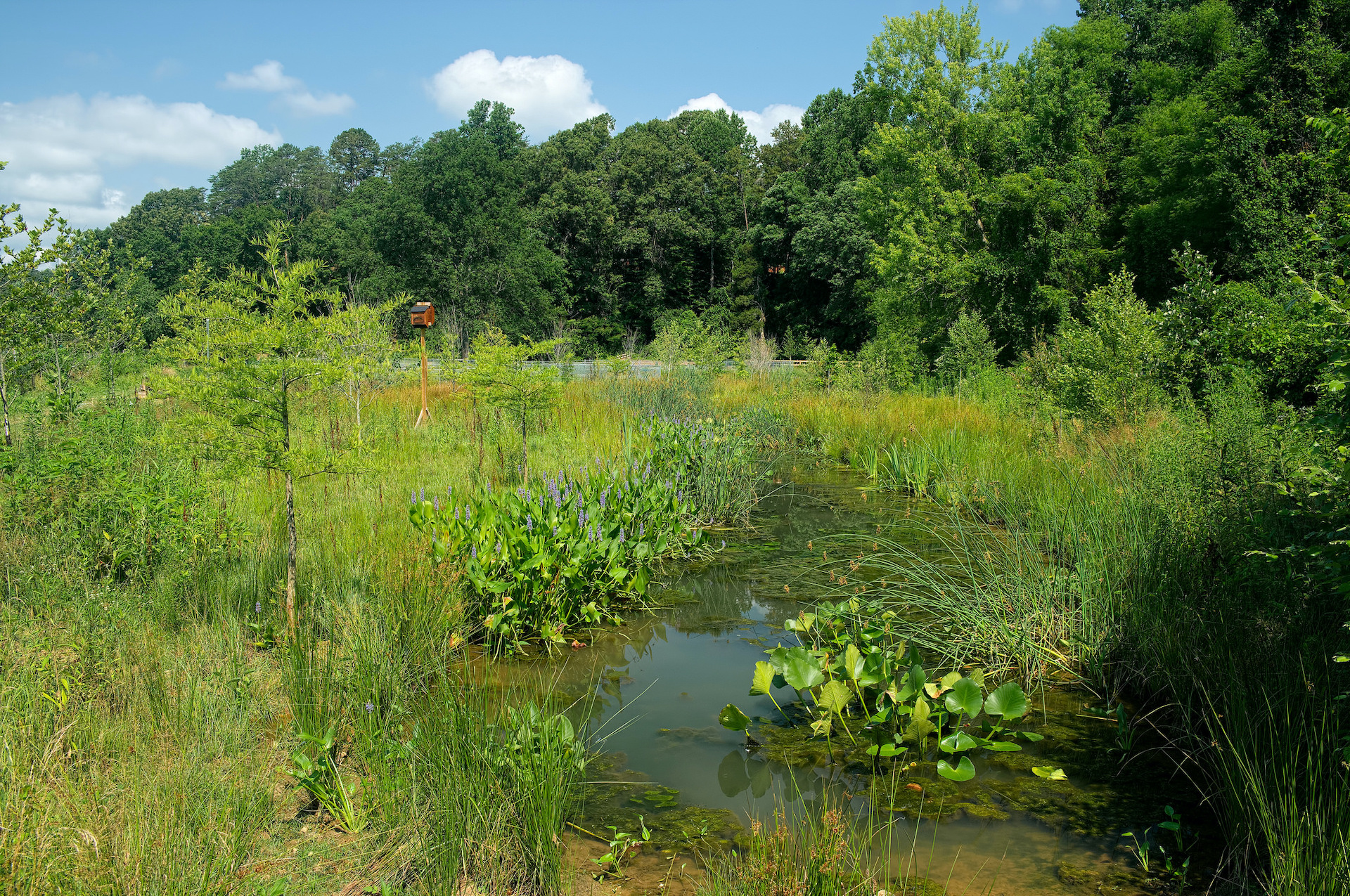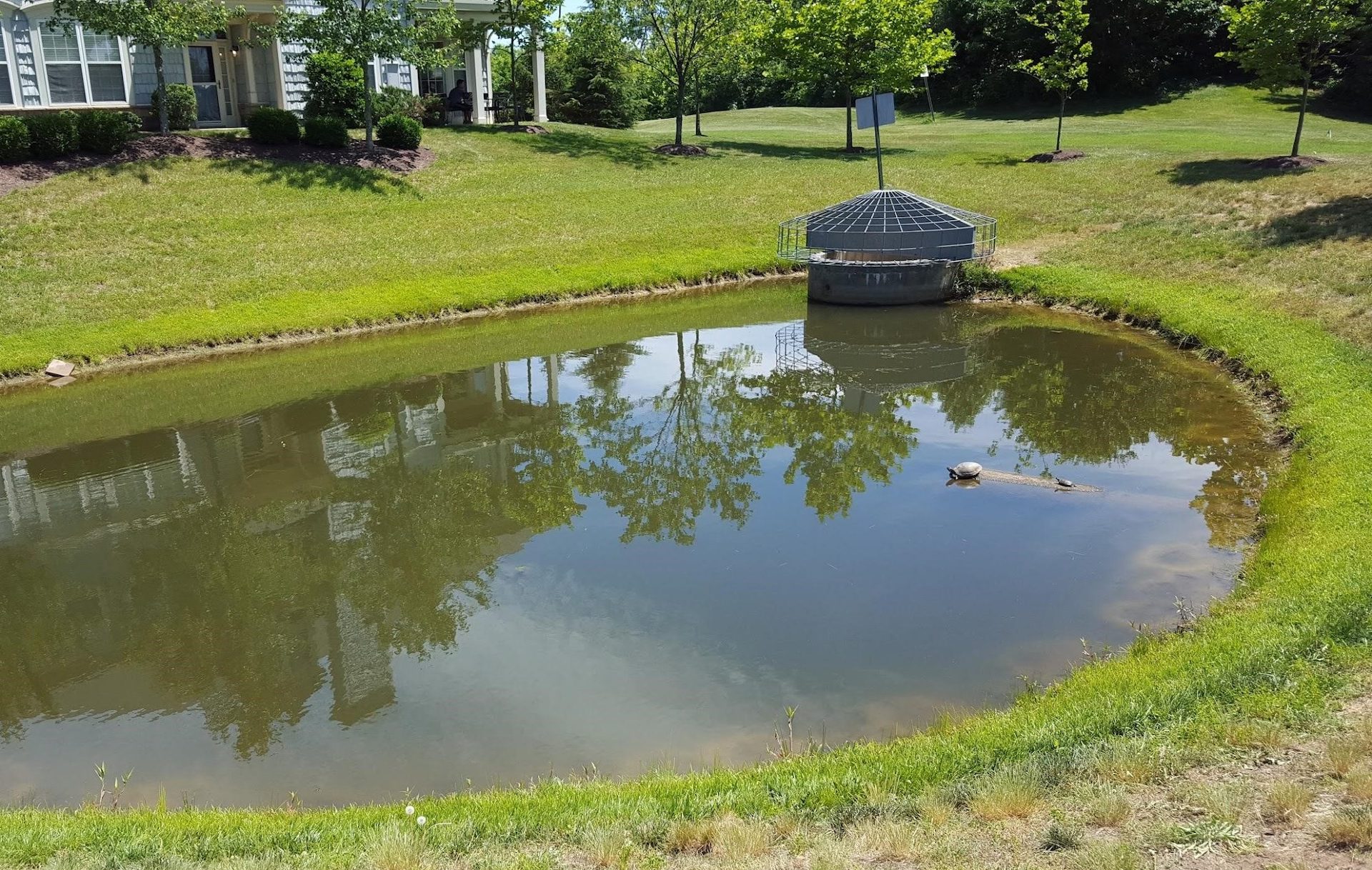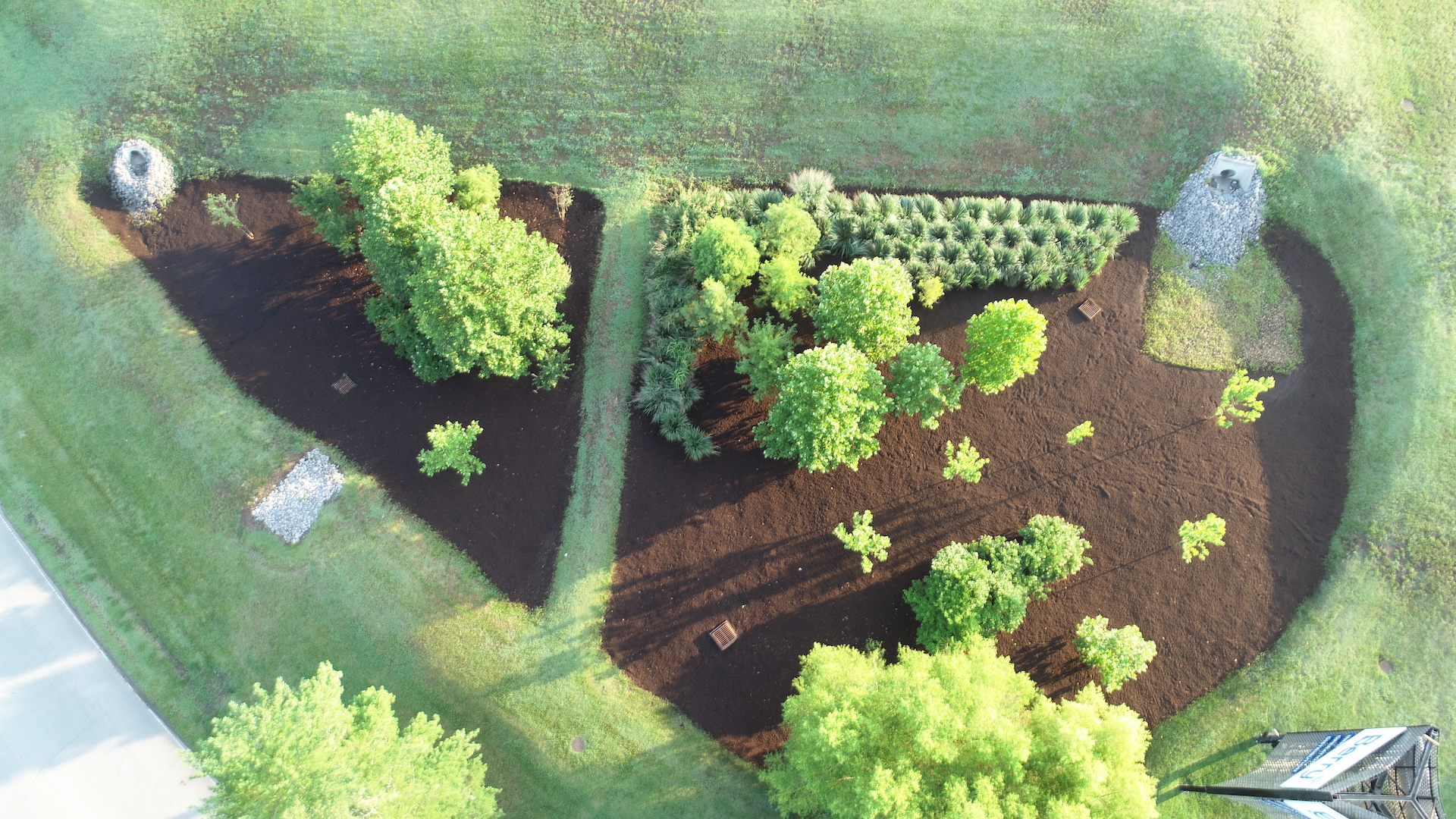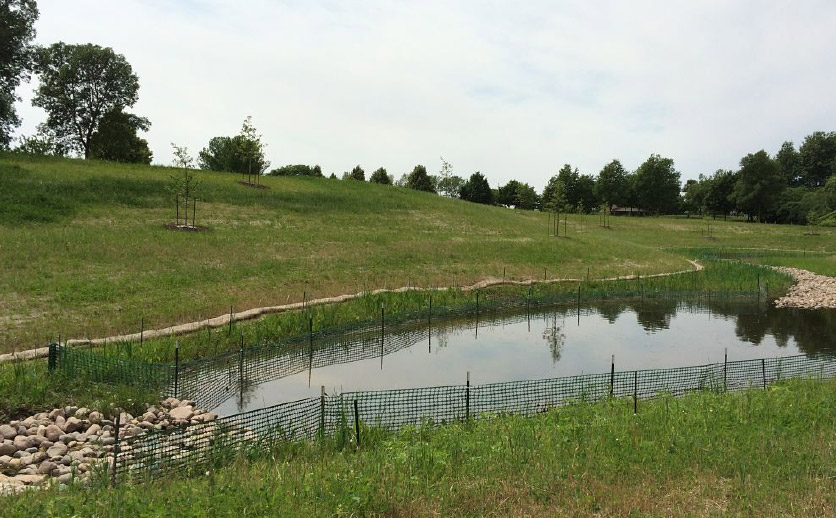Constructed Wetlands
A constructed wetland is an artificial wetland created to duplicate the processes occurring in natural wetlands. In these systems, water, plants, microorganisms, soil, the sun and the air all interact to improve the quality of the water that enters the system. When properly constructed and maintained, constructed wetlands can effectively remove many pollutants from municipal and industrial wastewater and stormwater. These pollutants include, but are not limited to, suspended solids, nitrogen, phosphorous and even heavy metals. Although constructed wetlands are extremely functional, they can also be aesthetically pleasing and provide a habitat for various animals, creating a public attraction for visitors to your property.
Once established constructed wetlands tend to be relatively low-maintenance landscapes, but benefit greatly from a management plan which aims at maximizing ecological function and aesthetics. There are eight general wetland types: fen, bog, seepage slope, seepage bog, mars, wet prairie, swamp, and bottomland forest; each of these require slightly different considerations however there is general maintenance that is applicable to all of them. General maintenance involves the consideration of the following factors: vegetation/wildlife management, water depth control structures, cleaning and maintaining inlet/outlet structures, inspecting embankments and structures for damage, inspecting monitoring devices, depth of sediment accumulation before removal is required, the acceptable range of water depth fluctuation, and supplemental water sources entering the wetland.



